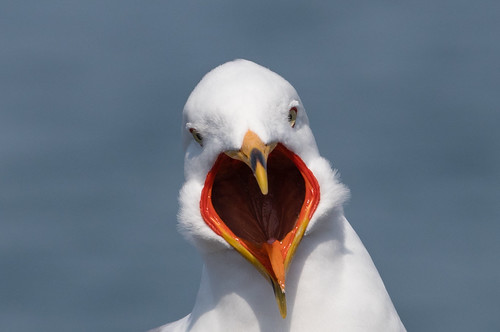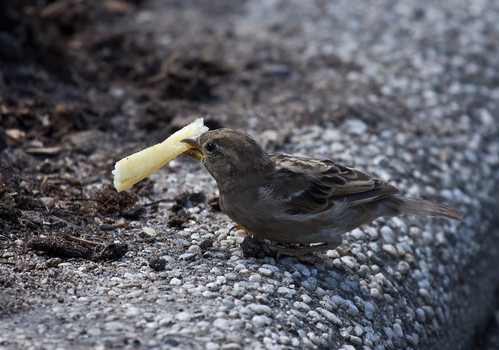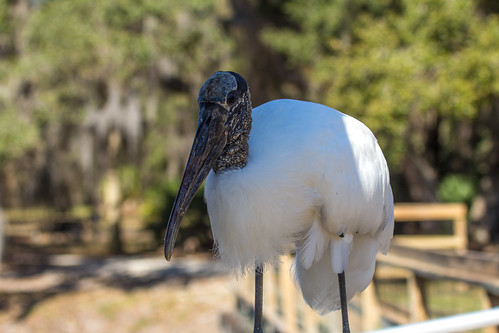Back in the 1980s, the population of Ring-billed Gulls all through the Great Lakes exploded. Here in Duluth, tourists and some locals found the gulls at McDonalds charming, especially on London Road where the gulls seemed to fit in beautifully with the lake, so visible from the outdoor seating area. Some picnickers fed the gulls at Brighton Beach and the Park Point recreation area, too. Gulls are savvy when it comes to exploiting new sources of food, and suddenly they were approaching not just picnickers who wanted to share their lunch, but anyone who dared be eating food on a blanket or picnic table. I heard stories of gulls stealing brats and hamburgers right off people’s grills. The Duluth News-Tribune, and I’m sure plenty of other newspapers, made a lot of references to Alfred Hitchcock.
It wasn’t feeding the gulls that caused the original population explosion—that happened as gulls learned to exploit landfills and dumpsters, and also to exploit the early mowing practices of farmers who provided a great many mangled eggs and baby birds for the gulls to devour. But people handing food to mooching gulls did change their behaviors, encouraging them to check out places where people dine or drop food. Now, except in the dead of winter, there are always Ring-billed Gulls cruising over the parking lots of our mall and Target as well as Canal Park, darting down instantly if someone drops some food or leaves a dumpster open.
Birds have always exploited our outdoor dining habits. I grew up in a Chicago suburb that had one of the first McDonald's restaurants. I could count on House Sparrows approaching me, and of course I shared my French fries with them. When our family went to Hawaii in 2000, every time we ate in an outdoor restaurant, adorable Zebra Doves would walk about underfoot.
My son works at Disney World so we go there a lot. Every outdoor dining spot has White Ibises, House Sparrows, and often Great Egrets mooching for food. When we went to Sea World in the early 2000s, I was saddened to watch a couple of magnificent Wood Storks reduced to begging for junk food. They're also a regular sight at Lake Kissimmee State Park, mooching for fish entrails at angler cleaning stations.
Now, with outdoor dining taking a big hit during the pandemic, there have been some unexpected consequences. On Aruba, so many tourists have been feeding Carib Grackles for so long that their population is terribly inflated. This year, with no tourists, the grackles moved inland to find other sources of food. They’ve been aggressive competing with smaller birds that don’t usually have to deal with the mostly coastal grackles. This weekend, an Aruba Birdwatching and Nature Tours Facebook page had the distressing report that some birders had witnessed a small group of the grackles attack and kill an Eared Dove in a gruesome way.
Meanwhile, more people have started backyard feeding because of the pandemic. Most of the birds we welcome at northern feeders in winter—woodpeckers, chickadees, and nuthatches—don’t have particularly variable populations. Studies have shown that chickadee survival in exceptionally cold winters is higher near bird feeders, but there is absolutely no evidence that these species are growing too numerous thanks to bird feeding.
Finches may visit our feeders in huge flocks during winter or migration, but again, there’s no evidence that our subsidies are causing problems for them except when they get killed at our windows or when we don’t keep the seeds in our feeders fresh and the ground clean beneath them—moldy seeds can produce nasty disease organisms. The conjunctivitis that sometimes plagues finches is easily transmitted bird to bird in their large flocks. Those species stay in large flocks whether or not they’re at our feeders, but the feeders do concentrate them closer together and sometimes hold them in one spot for longer than they’d stay in more natural places, speeding up disease transmission. Whenever we spot a sick bird at our feeders, it’s a good idea to close down the feeding station for a week or so, and to clean all the feeders and rake beneath them. If you can’t quit feeding cold turkey, just keep up a clean, small window feeder for your chickadees.
But in many places, feeders subsidize House Sparrows, starlings, grackles, and other birds that cause real problems for other birds. Sometimes feeders even attract rats. It’s important never to let bird seed sit on the ground overnight anywhere rats might be an issue, and important to limit subsidies to the birds that cause serious problems. A feeder subsidizing a lot of starlings is definitely causing problems for native cavity nesters.
My website has a large section devoted to ways we can help birds, and quite a few of those ways involve best practices for bird feeding. To learn more, check out www.lauraerickson.com and click on “Ways to Help.”



